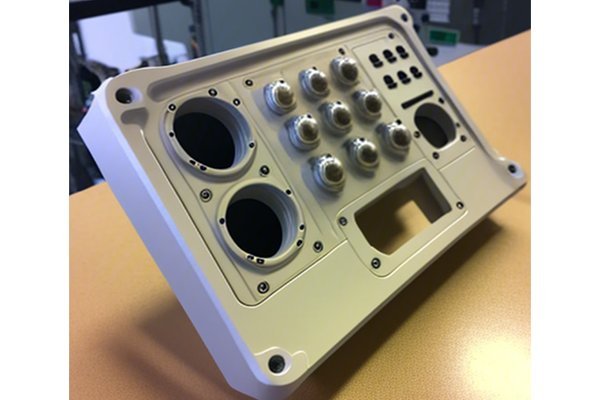Did you know that the aerospace industry is projected to grow to over $1 trillion by 2030? With the pressing demand for lightweight, durable, and high-performance aircraft components, the need for precision engineering has never been greater. One of the standout solutions that meet these demands is CNC (Computer Numerical Control) machining. This highly automated manufacturing process plays a crucial role in the production of customized aerospace metal components, ensuring quality, precision, and efficiency.
In this detailed exploration, we will delve into the significance of CNC machining in aerospace applications, focusing on its benefits, applications, and how it solves some of the industry’s most pressing challenges.
—
—
As the aerospace sector advances at an unprecedented pace, the reliance on customized components is more significant than ever. The flexibility and precision offered by CNC machining allow aerospace manufacturers to produce complex parts that meet stringent regulatory standards and safety requirements. But why is CNC machining particularly beneficial in this niche?
2.1 What is CNC Machining?
CNC machining is a manufacturing process that utilizes computer-controlled machinery to cut, shape, and manipulate materials with high precision. This technology allows for the production of intricate designs that would be difficult, if not impossible, to achieve with traditional machining methods.
2.2 How CNC Machining Works
At its core, CNC machining involves creating a design blueprint using CAD (Computer-Aided Design) software. This design is then transferred to a CNC machine, which interprets the digital instructions and executes the program by controlling various tools (lathes, mills, routers) to shape the material accordingly.
3.1 Regulatory Standards and Compliance
The aerospace industry is heavily regulated; components must adhere to strict national and international standards. CNC machining allows manufacturers to meet these compliance issues efficiently since the process is capable of achieving the necessary tolerances and continually replicating the specifications required.
3.2 Safety Implications

Precision in aerospace is not just about improving performance; it directly correlates to passenger safety. Flawed components can lead to catastrophic failures, making the accuracy of CNC machining critical.
4.1 High Precision and Accuracy
CNC machines hold tolerances as tight as ±0.001 inches, significantly reducing the margin for error. This high degree of precision is vital in aerospace applications, where every component must perform optimally within its working environment.
4.2 Versatility in Material Use
CNC machining can work with a variety of materials commonly used in the aerospace sector, including aluminum, titanium, high-strength steels, and composites. This versatility means that manufacturers can choose the best material for the specific application without compromising on quality.
4.3 Shorter Lead Times
By streamlining the manufacturing process with CNC machining, aerospace companies can reduce lead times significantly. Components that would traditionally take weeks to manufacture can be produced in days, enabling faster turnaround on projects and quicker time-to-market for new aircraft designs.
4.4 Cost-Effective Production
Despite the initial investment in CNC machinery, the long-term cost savings realized through CNC machining are substantial. The automation of processes reduces labor costs, while high precision leads to less material waste and fewer errors.
4.5 Enhanced Quality Control
Modern CNC machines come equipped with built-in measurement tools and sensors to monitor the machining process in real-time. This capability allows manufacturers to maintain strict quality control, ensuring that every part produced meets the required specifications.
5.1 Components for Aircraft Structures
CNC machining is frequently employed in the manufacturing of fuselage and wing components, where strength-to-weight ratios are critical.
5.2 Engine Turbines and Compressor Parts
Precision-engineered components for jet engines are another major application. The materials and tolerances required for these parts are stringent due to the extreme conditions they must withstand.
5.3 Specialized Fasteners and Fittings
CNC machining allows for the production of custom fasteners and fittings that meet unique specifications, improving assembly efficiency and performance.
5.4 Electronic Enclosures
CNC machining also plays a role in creating housings for avionics and electronic components that are vital for navigation and safety systems on aircraft.
6.1 Maintaining Tolerance Levels
The challenge of maintaining tight tolerance levels throughout a production run is best solved through the capabilities inherent in CNC machining, which allows for real-time adjustments based on feedback from built-in sensors.
6.2 Adapting to Design Changes
In an ever-evolving industry, the flexible nature of CNC machining enables manufacturers to adapt designs easily without the need for extensive retooling.
6.3 Material Fatigue and Durability Testing
Advanced CNC technology also allows for better testing of materials under stress to predict fatigue and durability, ensuring that components will perform as required over their lifespan.
7.1 The Role of Automation and AI
Automation and artificial intelligence are set to transform CNC machining further, offering predictive analytics that can optimize machining processes in real-time.
7.2 Advances in Materials
The emergence of advanced materials, such as lightweight composites and alloys, presents new challenges for machining but also new opportunities for creating more efficient designs.
7.3 Sustainability and Environmental Concerns
As the aerospace industry shifts towards more sustainable practices, CNC machining will be part of efforts to reduce waste and improve energy efficiency in manufacturing processes.
CNC machining stands out as a transformative force in the aerospace industry, bringing unparalleled precision, efficiency, and flexibility to the production of customized metal components. From improving safety standards to reducing lead times, the benefits are extensive and profound.
As the demand for advanced aerospace manufacturing continues to rise, understanding the pivotal role of CNC machining becomes increasingly important. Manufacturers must consider how to integrate these technologies effectively into their workflows to remain competitive and responsive to market demands.
Reflecting on the challenges and opportunities presented in this blog, readers should appreciate why CNC machining is indispensable—both for ensuring safety in the skies and for driving innovation in aircraft design.
Ultimately, as we look to the future of aerospace, CNC machining will undoubtedly remain a cornerstone of progress, ensuring that the industry not only meets current challenges but also the demands of tomorrow.






